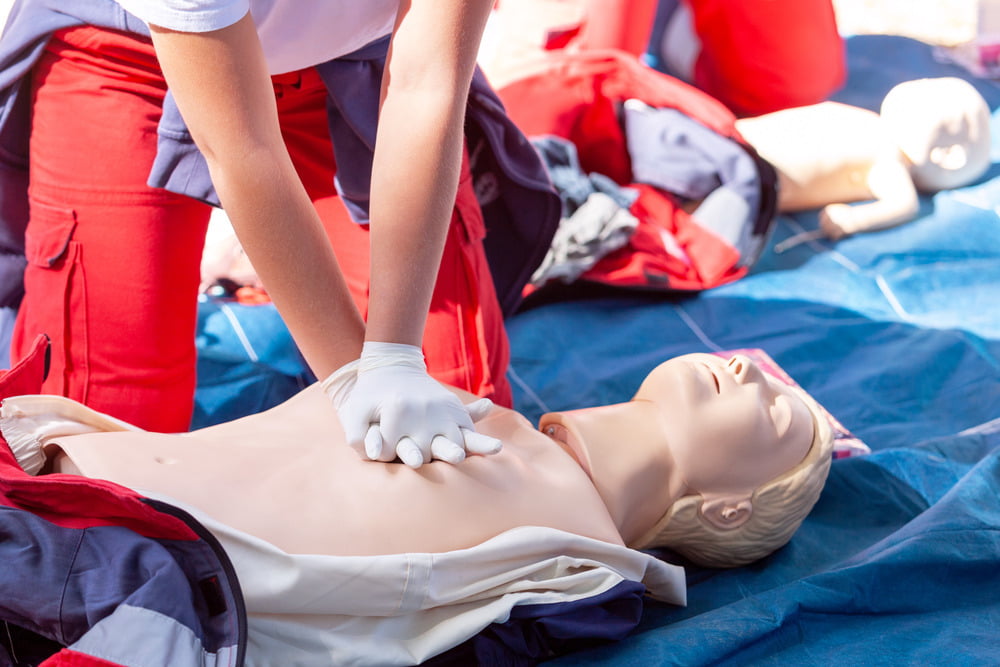Safety in the workplace transcends individual responsibility; it’s a culture where every team member plays a vital role. At the heart of this culture lies emergency first aid, a shared commitment rather than a solo task.
Adopting a team-based approach to emergency first aid extends beyond fulfilling health regulations. It cultivates a sense of collective responsibility and unity, ensuring that everyone is prepared to act in emergencies. Let’s dive into the impact of this approach and how it can transform workplace safety into a shared priority.
Understanding the Concept of a Safety Culture
At its core, a safety culture in the workplace is more than just policies and procedures; it’s about creating an environment where safety is ingrained in every aspect of the organisation. This culture is defined by the collective mindset and behaviours of employees at all levels, where safety is not just a priority, but a value.
Key Characteristics of a Strong Safety Culture:
- Shared Commitment: Everyone, from top management to new hires, shares a commitment to safety. It’s seen as a joint responsibility, where each individual’s actions contribute to the overall safety of the workplace.
- Proactive Approach: A proactive safety culture anticipates potential risks and takes steps to mitigate them before they become issues. This involves regular risk assessments, updating safety protocols, and continuous learning.
- Open Communication: There is an open dialogue about safety, where employees feel comfortable discussing hazards, reporting incidents, and suggesting improvements.
- Learning and Adaptation: Mistakes and accidents are viewed as opportunities for learning and improvement. The focus is on understanding what went wrong and how to prevent it in the future.
- Employee Empowerment: Employees are empowered with the training and resources needed to take action on safety matters. This includes emergency first aid training, which equips them to handle emergencies effectively.
Incorporating emergency first aid into a safety culture means that all team members are not only aware of safety procedures but are also actively prepared to respond to emergencies. It transforms first aid from a checklist item into a dynamic element of the workplace’s safety ethos.

The Significance of Emergency First Aid in Safety Culture
Emergency first aid is a pivotal element in any safety culture, especially in the workplace. Its significance lies not only in the practical skills it provides but also in the mindset it fosters among all team members.
Integrating Emergency First Aid: Key Benefits
- Immediate Response: Trained staff can provide immediate assistance in emergencies, potentially saving lives and preventing minor injuries from escalating.
- Confidence and Competence: Emergency first aid training boosts employee’s confidence and competence, enabling them to handle crises calmly and effectively.
- Shared Responsibility: When first aid is a collective effort, it reinforces the concept of shared responsibility for safety, encouraging everyone to be vigilant and proactive.
- Building Trust: Knowing that colleagues are trained in first aid creates a sense of trust and security, fostering a more supportive work environment.
- Crisis Preparedness: Regular first aid training ensures that employees are not only prepared for specific medical emergencies but are also more generally attuned to crisis management and response.
Implementing a Team-Based Emergency First Aid Strategy
Implementing a team-based first aid strategy is a proactive step towards enhancing workplace safety and fostering a culture of mutual care and responsibility. Here’s how organisations can effectively introduce this strategy:
- Assess Needs: Start by assessing the specific first aid needs of your workplace, considering factors like the size of your team and the nature of your work environment.
- Encourage Participation: Promote the importance of first aid training within your team. Highlight how these skills are not only vital in the workplace, but also beneficial in personal life.
- Schedule Regular Training: Ensure that your team receives first aid training at regular intervals. This keeps their skills sharp and updated with the latest practices.
- Practice Drills: Regularly conduct first aid drills. This helps in reinforcing the training and making sure everyone knows their role in an emergency.

Our Level 3 Emergency First Aid Course
For a comprehensive approach, our Level 3 Emergency First Aid Course is an excellent option. It’s designed specifically for workplaces in low-risk sectors, like offices and shops, ensuring that the training is relevant and practical. It meets and exceeds the safety standards recommended by the HSE and is CPA and Qualsafe recognised.
Investing in emergency first aid training is a testament to your commitment to safety and employee wellbeing. Book your team’s places on our Level 3 Emergency First Aid Course today, and make a significant leap towards a safer, more prepared workplace.







